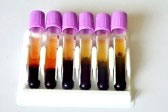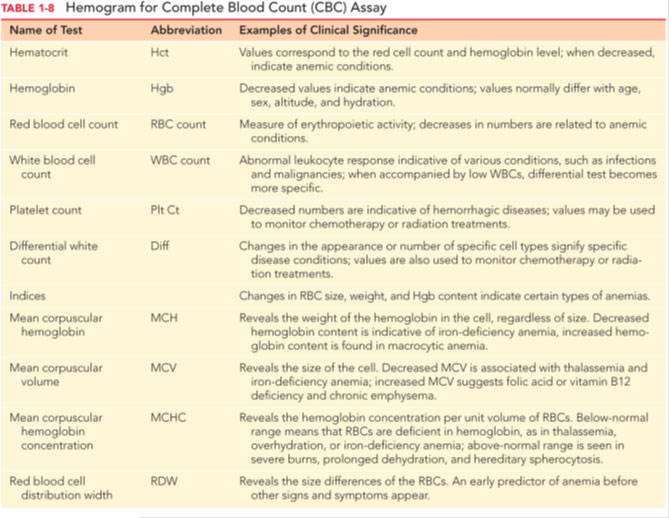
In a clinical laboratory the hematology department performs numerous different tests on blood. The most commonly performed test is the complete blood count (CBC) also called full blood count (FBC), which includes; white blood cell count, platelet count, hemoglobin level and several parameters of red blood cells. Another common hematology test is the erythrocyte sedimentation rate (ESR).
A complete blood count(CBC), also known as full blood count(FBC) or full blood exam(FBE) or blood panel, is a test requested by a doctor or other medical professional that gives information about the cells in a patient's blood. A lab technician (US: "medical technologist") performs the requested testing and provides the requesting Medical Professional with the results of the CBC. A CBC is also known as a "hemogram". The cells that circulate in the bloodstream are generally divided into three types: white blood cells (leukocytes), red blood cells (erythrocytes), and platelets or thrombocytes. Abnormally high or low counts may indicate the presence of many forms of disease, and hence blood counts are amongst the most commonly performed blood tests in medicine.
The erythrocyte sedimentation rate(ESR), also called a sedimentation rate, sed rate or 'Biernacki Reaction', is a non-specific measure of inflammation that is commonly used as a medical screening test.
To perform the test, anticoagulated blood is placed in an upright tube, known as a Westergren tube and the rate at which the red blood cells fall is measured and reported in mm/h.
When an inflammatory process is present, the high proportion of fibrinogen in the blood causes red blood cells to stick to each other. The red cells form stacks called 'rouleaux' which settle faster. Rouleaux formation can also occur in association with some lymphoproliferative disorders in which one or more immune-globulins are secreted in high amounts. Rouleaux formation is however a physiological finding in some equidae and can be as such in felidae and suidae species, namely the horse, cat and pig respectively.
The ESR is increased by any cause or focus of inflammation. The ESR is decreased in sickle cell anemia, polycythemia, and congestive heart failure. The basal ESR is slightly higher in females.


